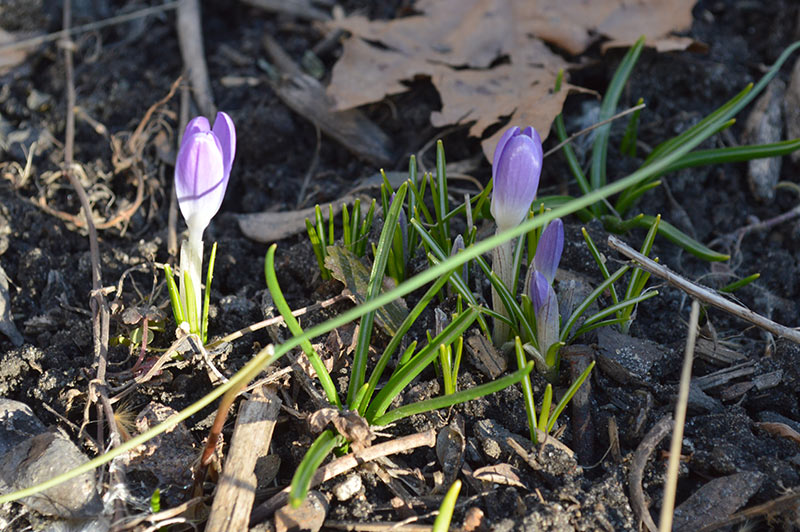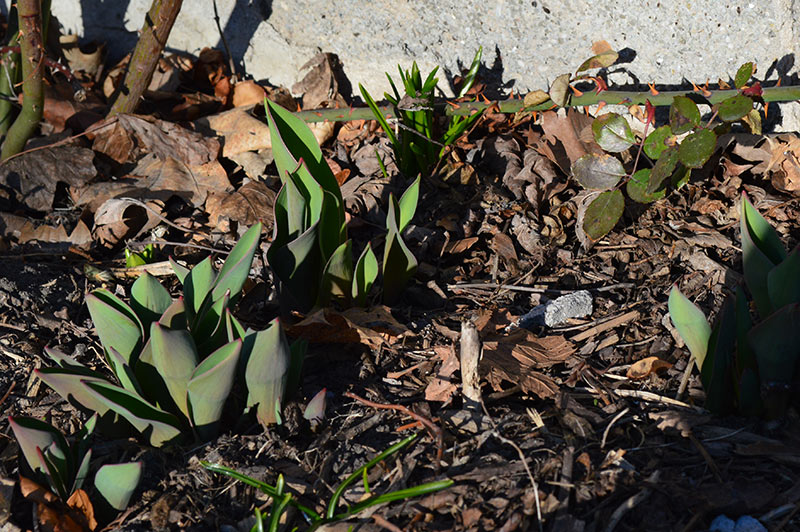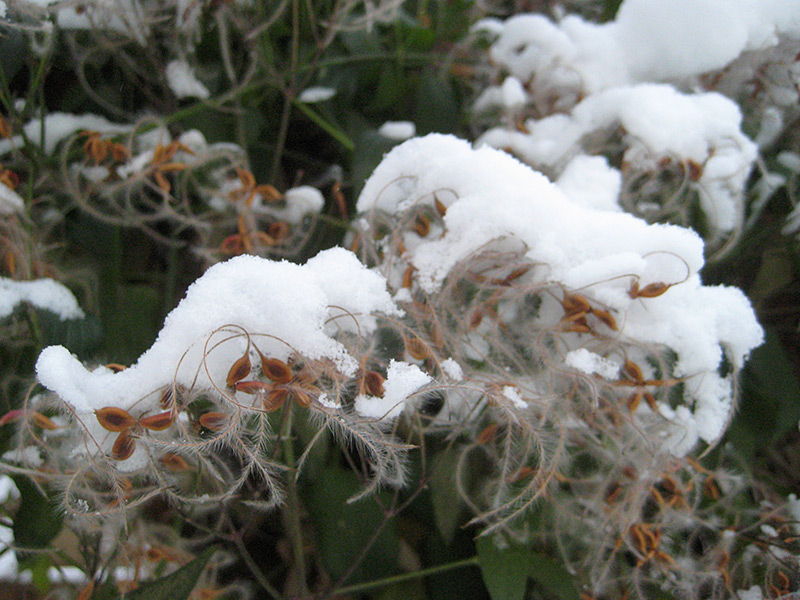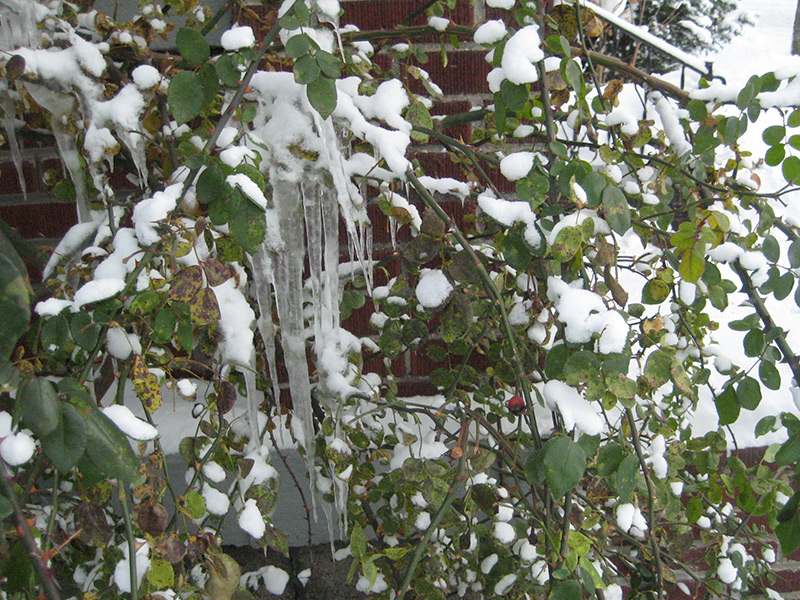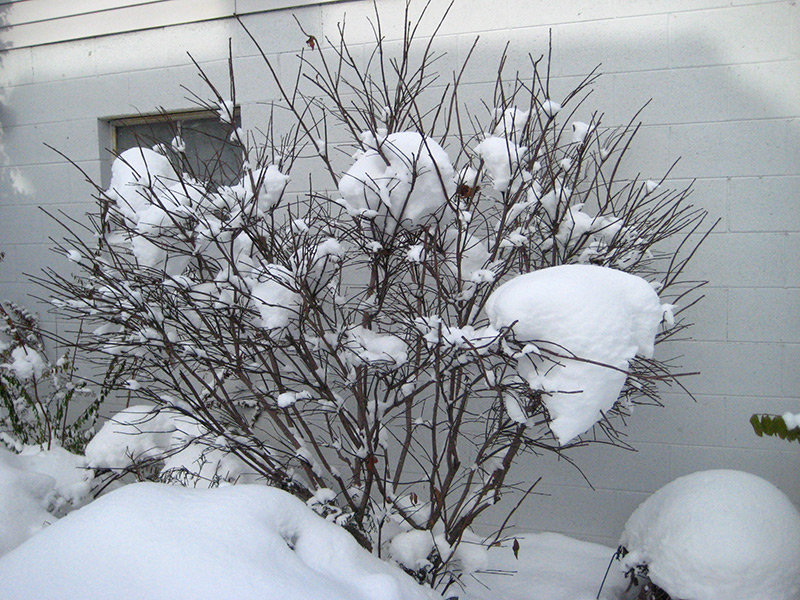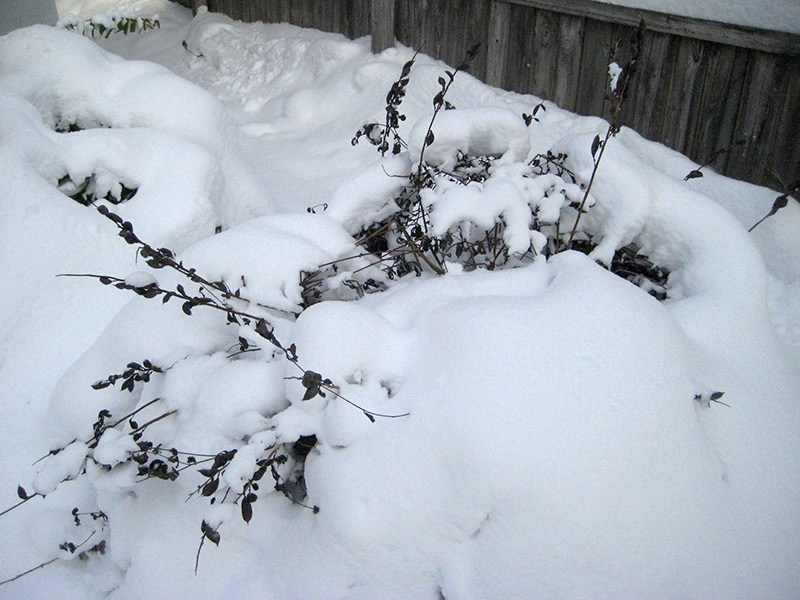The Lot is located under 2 miles from the center of our little city. Our neighborhood is older than the Burbs, with our home being built in 1923. At some point the entire street was planted with norway and silver maples, all of which are at their mature height now.
Since we’ve lived on the Lot, we have had a norway maple in the easement at the South side of the house. The tree helped to shade the porch and home during the hot summer months. In the winter, its absence of leaves allowed the sunlight to help warm the south side. The maple would also keep a gardener cool when she wanted to work in the south bed midday. It was a pretty sweet deal.
However, also during the time we have lived here, a wound in the trunk of the tree has grown progressively worse. The best guess we can make is it was backed into by some past neighbor. We really, REALLY didn’t want to send in a request for its removal until it had to go. This spring was the season.
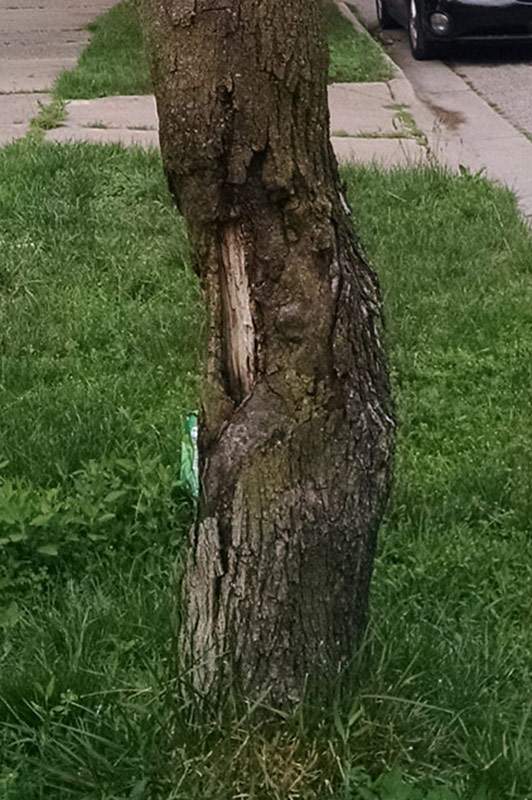
As all other trees on the street were leafing out this past spring, the norway maple on the front of the Lot was not. Also, the wound on the tree had be weakening the middle of the trunk and the tree was beginning to lean toward the house. All signs pointed to a phone call to the city and a request for the maple’s removal.

Monocultures in Urban Neighborhoods
During our time with the Urban Forest Project, the Other Half and I learned this approach of planting a street as a monoculture (a single type or family) is not the best idea. This became evident to city planners when Dutch Elm Disease in the 1950s and then Emerald Ash Borer in the early 2000s caused entire streets of those trees to be removed at a time.
The city now selects trees that can withstand the harsh urban conditions, chooses trees with the correct height as to not grow into power lines, and aims for a variety of species for the neighborhood. With a diverse population lining a street, the chances of a future tree disease or pest causing the removal of all the trees at once is slim.
A Gift of Gingko
The Other Half and I had been exchanging ideas for a replacement tree for the majority of the season. After removal, it would be another 18 months before the city would plant a new tree (with no charge to us) to replace the norway maple. However, I’m impatient, so we were going to offer to purchase and plant a replacement. We’d simply select a tree from the city’s list of approved trees.
But this morning the universe had a different plan as a Citizen Forester volunteer knocked on our door. A neighbor a block or two down had applied to and received a mini-grant to have trees planted in our neighborhood. There was a lone ginkgo which had been passed over by a neighbor who did not want trees in his/her property’s easement. The Citizen Forester had noticed the white mark on the dying maple (city code for “remove this tree”), and wondered if we wanted the ginkgo. Um, yes please!!
The Maidenhair Tree
Ginkgo biloba, or the Ginkgo, is the sole surviving genus of the order Ginkgoales and is considered a living fossil. This ancient order of plants, believed to have been present 150 million years ago, have characteristics of both ferns and conifers. The fan-shaped leaves of the Ginkgo resemble fronds of the plant genus Adiantum, or the maidenhair ferns. The leaves are also often in two lobes, which is how it picks up the “biloba” or “two-lobed” in its name. The tree was cultivated in China and Japan because of its religious significance, but no natural stands of Ginkgo are thought to exist.

The cultivar ‘Autumn Gold’ is the one now situated in the easement on the Lot. According to the Missouri Botanical Garden website, this ginkgo grows up to 40 or 50′ and makes a great shade tree. It will have green flowers (all current ginkgo cultivars are male) in the spring and gold leaves in the autumn. It requires full sun so the south side of the Lot is an excellent location for it. Due to the low maintenance required and the tree’s ability to tolerate air pollution, the Ginkgo makes a great tree for an urban environment.

Ginkgo Guardians
So now it is up to the Other Half and I to care for our new sapling. It was delivered as a ball and burlap tree, so I’ve already been out there a few times to fuss over untangling its branches. Those are often squished a bit from being bound against the leader with twine before being stacked on delivery trucks. This whole weekend we are supposed to finally get some seasonal rainfall, so the tree should get a good drink. The leader, or vertical stem on top of the trunk of the tree, is a bit crooked. However, the trunk is straight, and I’ve seen leaders straighten out over a few years once the tree is growing in its new location. Next year we’ll make sure it gets watered well throughout its first summer. I’m looking forward to helping it get settled and integrating it into the crazy garden that is the Lot.



